In today’s new wave of hip hop – full of music with insane autotune, mumbled rap, and carefree styles – Ad Libs are the icing on the cake of any song. If you didn’t already know what ad libs are – they’re the background vocals filling the open spaces of a mix, such as Travis Scott’s iconic “It’s Lit,” or a classic Migos “skrrt,” or a whispery “GANG” from Chief Keef. Certainly, ad libs can also be sung. Case in point, they’re fun and spice projects up. For an artist behind the mic, recording ad libs is often pretty wild and spontaneous – which is how it should be! However, for the engineer, there is a duty to correctly record the ad lib performance and then mix it using proper processing, and of course, cool effects. If the ad libs aren’t hot, the mix won’t come across as exciting to the artist and fans – so its good to have a few ad lib tricks up your sleeve.

Recording the Ad Libs: Ad libs should be recorded once the lead vocal and any stacking is complete. Some artists prefer to record their ad libs section by section, while others record them in one or two takes across the entire song. Many rappers will record several random ad libs and then ask for the weakest to be muted. Other artists may maintain a simple approach and not record any at all, and others record an extremely excessive amount – literally. For a group like the Migos, the ab libs function as a focal point of the recording, giving identity to the music. Since ad libs are very dynamic, its important to have the artist to back up from the microphone if he or she is planning on being extra loud. Be sure to lower the gain on your preamp to avoid clipping, which will result in needing to re-do a take. If the take was improvised, the artist will not want to re-do his performance! This isn’t a joke either – I’ve been in the studio plenty of times where the artist’s vocals are mellow across the board, and then it’s an all-out screaming fest when tracking the ad libs. Ad-libbing artists really can be full of surprises.
Mixing the Ad Libs – Plug-Ins, Effects, & Finesse: While ad libs may capture lots of attention, they still should be leveled in the background of a mix, far quieter than any lead vocals. Using your ab lib track to repeat the phrases of a chorus often is tasteful, in addition to panning ad libs from side to side with automation – creating movement and wideness. Keep in mind, any hard panning will need to be undertaken with proper gain adjustment. Ad lib effect tracks are also ideal for intros and outros containing dialogue.
Rarely do I keep ad libs dry or unprocessed. If there’s any aspect of a mix where the artist will be open to using new effects or experimental sound, its with the ad libs. Ad libs, especially with effects, can create many interesting textures, but the artist will only appreciate this kind of aesthetic if the phrases of the ad libs are clearly heard and understood. In turn, my go-to ad lib processing is the classic telephone filter, which has a catchy radio timbre that pleases the listener. What you may not already know is that the telephone filter, now a staple in industry mixes, actually had it’s inception here at Studio 11 Chicago in the late 90s. Originally synthesized using Logic DAW systems and delays, the telephone filter was used (and still is used) by Studio 11 engineers to compliment the unconventional, urban styles coming out of Chicago neighborhoods. Today, the telephone filter is popular with widespread use across the world. By the same token, many of today’s approaches mimic, but do not replicate and nail the sound on the head – so I’ll take you through the correct processing plug-in-by-plug-in (there’s more involved than just a simple filter!)
1.) Initial Compression: First things first, if we are going to create telephone filter ad libs, the vocals are going to need a healthy amount of compression. A bouncy squash from the Waves R-Vox always does the trick.
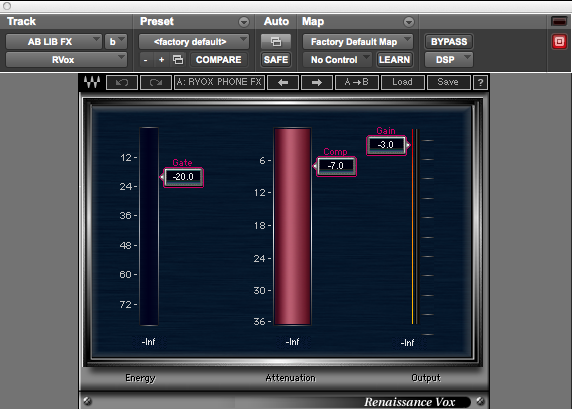
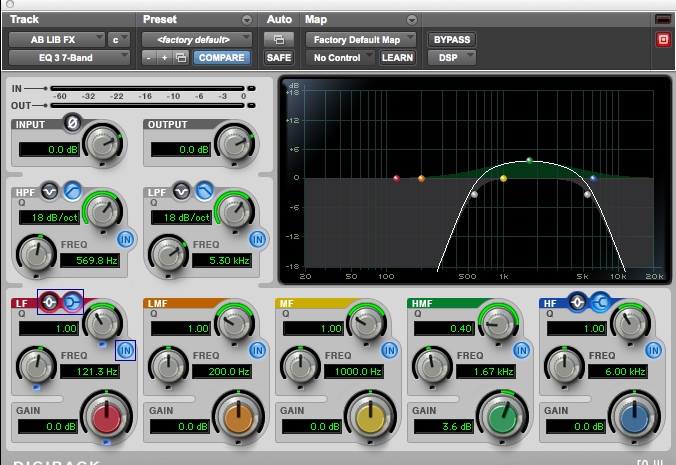
2.) Filter EQ: A basic parametric EQ works perfect for creating the filter we need. In addition to the low and high pass filters above, a boost to the remaining mid range is what truly brings out the radio, telephone-like vibe.
3.) Delay: A slightly noticeable echo almost always compliments the telephone filter chain. Instead of creating a send, I place the delay third in the chain and adjust the MIX parameter to dial in wetness. Eighth notes will do the trick.
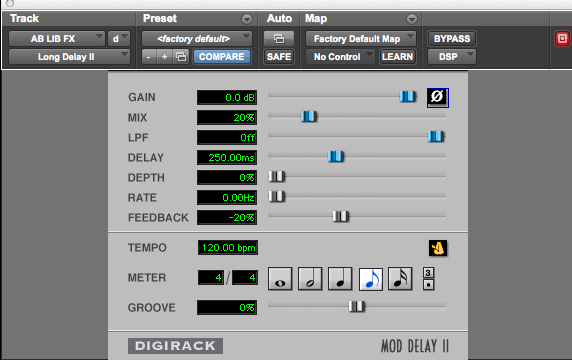
4.) Lastly, apply additional compression for tone and control..

5.) Other Cool Ad Lib Effects to Try Out…
Autotune Over the years I’ve had great responses to using autotune on the telephone filter, even if the project is not an “autotune song” so-to-speak. Try surprising your artist here. For example, many drill artists make hard-hitting singles or freestyles where autotune does not belong on the leads, yet is a great decoration on the ad libs. “Boom, boom, boom, BOOM !”
Try out some Crazy Delays

Metaflanger
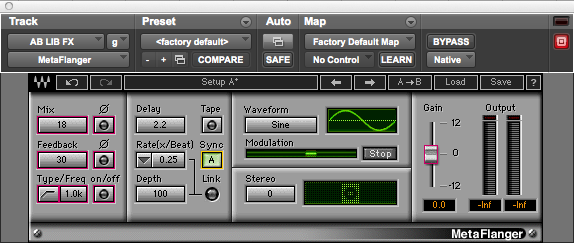
The Waves metaflanger works great for creating ambient textures; I’ve always thought of the sound of this plug in as a spaceship blasting off. The metaflanger works great on atmospheric ad libs, and even on background belts for singers. Additionally, the “SYNC” parameter (engaged in the image above) allows the processor’s rate to sync with the session tempo. Moreover, the metaflanger works great on ad libs in tandem with reverb, or even distortion. The metaflanger really brings out the spaciousness of reverbs with long tails, which is why I usually place the metaflanger after any reverb in the ad lib chain. Likewise, the metaflanger also sounds best behind any distortion. The one thing to watch out for when using the metaflanger is build up of unwanted noise from processed highs. In general, a plug in like the metaflanger is most flattering by pleasantly smearing the upper mid range of a vocal, which is why it compliments the telephone filter.
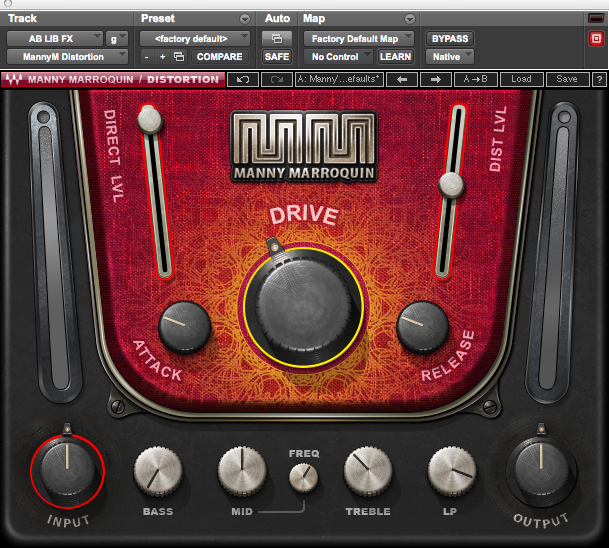
In conclusion, make your ad lib sound count, and make it one-of-a-kind . The ad libs are a unique canvas in the mix where detail and technique matters!
Chris Baylaender
Studio 11 Chicago
Engineer

Comments.
Currently there are no comments related to this article. You have a special honor to be the first commenter. Thanks!